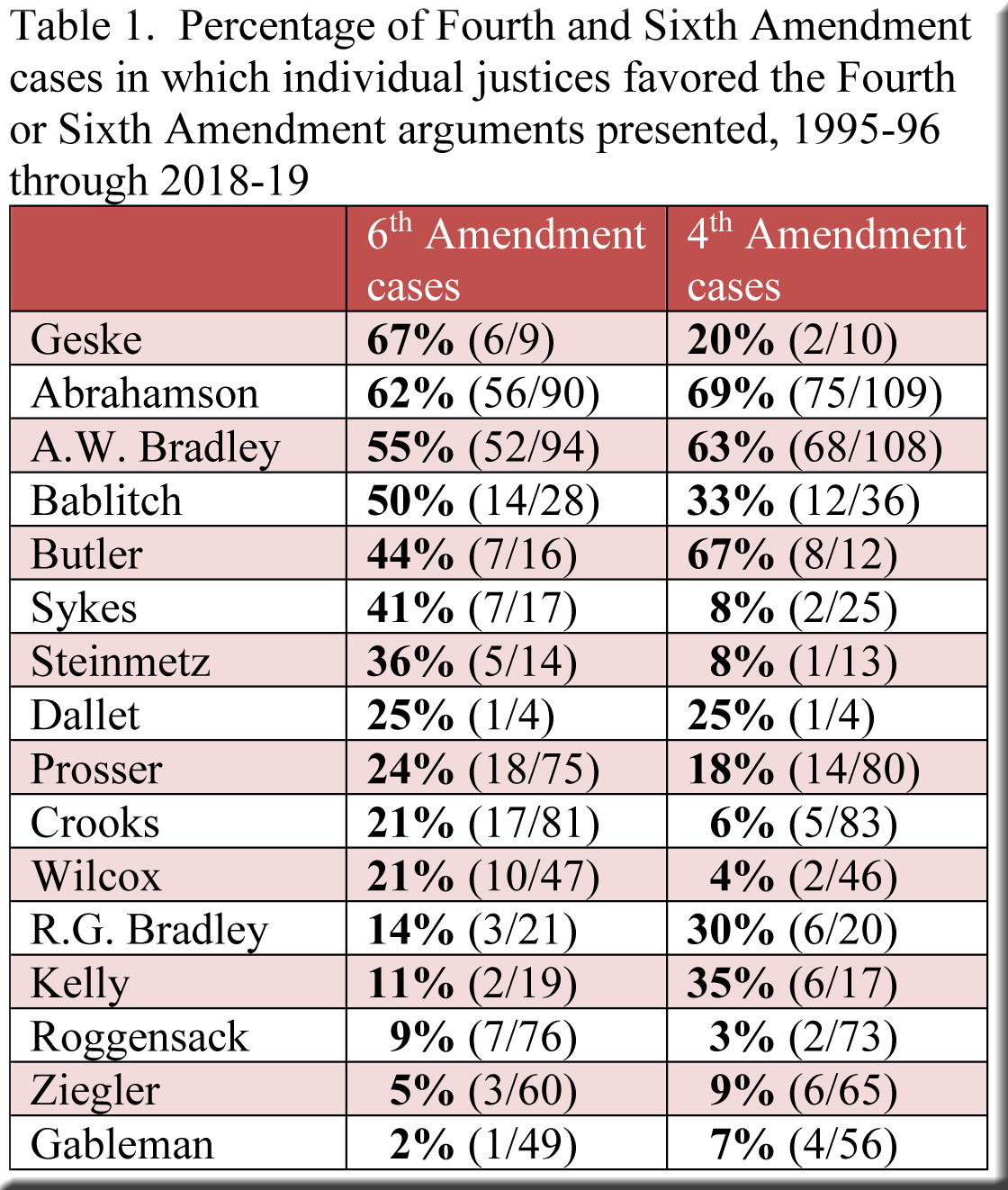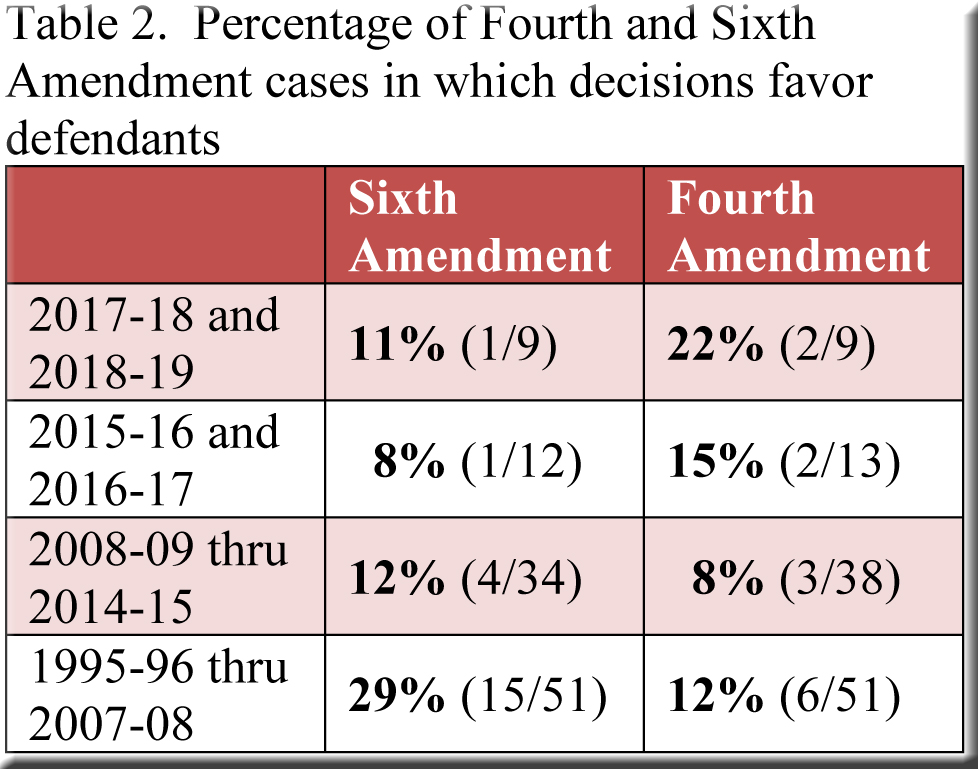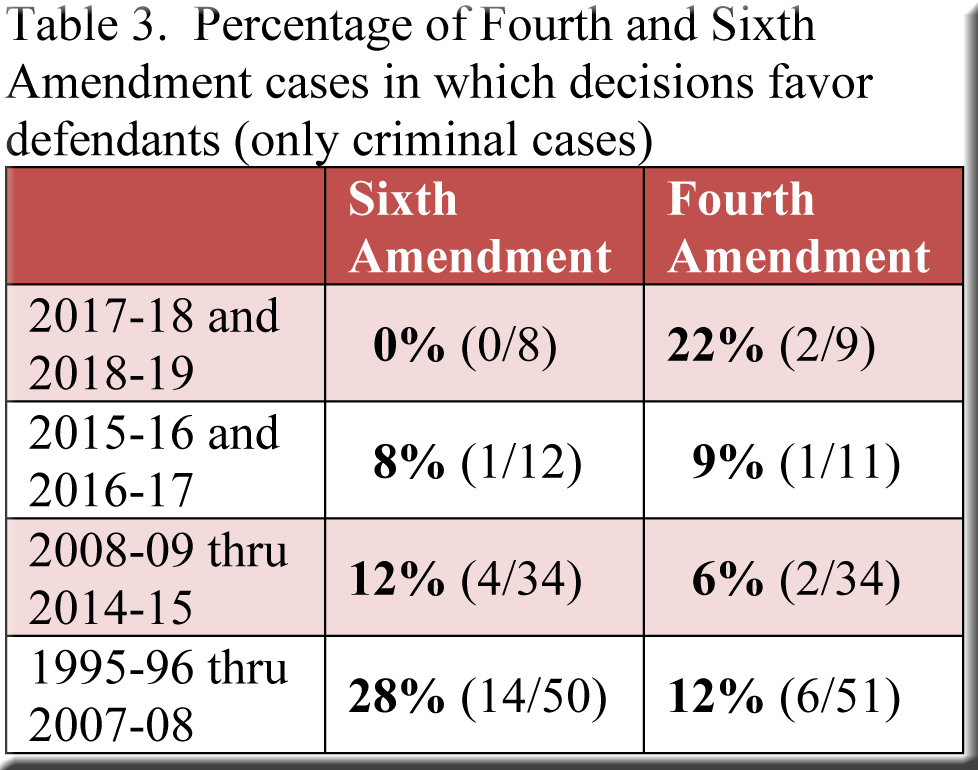Sixth Amendment cases address a defendant’s right to a fair trial—specifically, the right to (1) have a prompt and public trial, with an impartial jury, (2) know the nature of the charges and the identity of one’s accuser, (3) confront adverse witnesses, (4) testify and present witnesses on one’s behalf, and (5) have a competent lawyer.[1] A number of these cases reach the supreme court every term, just as often as those involving the Fourth Amendment, and thus they merit periodic monitoring to determine what has changed (and what has not) in the justices’ voting.[2]
At the time of our last update, Justices Rebecca Bradley and Kelly had not been on the bench long enough to have participated in many Sixth Amendment decisions, but we can now examine with more confidence their voting records displayed in Table 1.[3] There are several points of interest. First, both justices remain much less receptive to Sixth Amendment arguments than to those invoking the Fourth Amendment—making them unique among justices commonly labeled conservative.[4] The gap is a bit smaller than it appeared in the previous post, but it is still substantial. Noteworthy, too, is the rise in Justice Bradley’s percentage for Sixth Amendment cases, from 8% through the end of 2016-17 to 14% two years later. This moved her above Justice Kelly, who inched up from 10% to 11%. In the process, the figures for both justices climbed above the 9% for Justice Roggensack, who (along with Justice Ziegler) did not side with the defendant in any Sixth Amendment case over the last two terms.
To be sure, the Sixth Amendment percentages for all four of these justices are very low, placing them in the bottom third of Table 1. Their dominance neutralized the much higher percentages for Justices Abrahamson (62%) and Ann Walsh Bradley (55%), and it accounts for the meager success rate for Sixth Amendment arguments of late. In contrast, during the early years of the period under consideration, the court generally afforded a less chilly reception to Sixth Amendment arguments—and even credited them more readily than their Fourth Amendment counterparts. That appeared to be changing by the time of the previous post, and the last two terms have strengthened this impression, with the Fourth Amendment’s success rate now doubling that of the Sixth Amendment (Table 2).
Nearly all of the Sixth Amendment and Fourth Amendment cases that reach the court involve criminal issues.[5] One can see this by comparing Table 2 (which covers non-criminal as well as criminal cases) with Table 3, where only criminal cases are included.
Although only 15% of Fourth Amendment arguments in criminal cases succeeded over the past four terms, this is three times the minuscule success rate (5%) in Sixth Amendment criminal cases. It will be interesting to see if such a large difference—not at all characteristic of the period’s early decades—persists in years to come.
[1] To select Sixth Amendment cases, I followed the guidelines spelled out in the second footnote of the previous update. On the rare occasions when parties conducted a statutory argument rather than a constitutional argument—to determine whether a defendant waived his right to be present at some portion of his trial, for instance—I did not include the case.
[2] Click here for a table showing the number of Sixth Amendment cases decided each term, and the percentage that they represented of all decisions filed, from 1995-96 through 2018-19.
[3] Justice Roland Day is not included in Table 1 because the data cover only his last term on the bench (1995-96).
[4] We might discount Justices Ziegler and Gableman in this regard, as they almost never accepted arguments that relied on either amendment—especially not in criminal cases.
[5] I am defining as criminal cases all cases whose numbers have CR suffixes and all of the remaining cases that pertain to collateral attacks on criminal convictions. This accounts for the overwhelming majority of cases in the tables.



Speak Your Mind